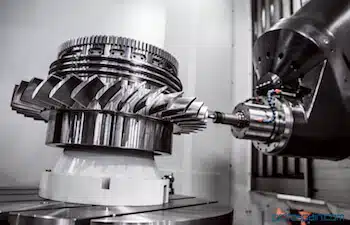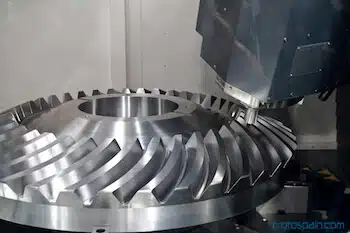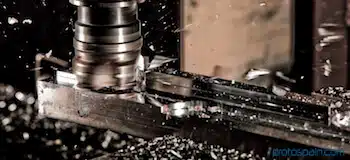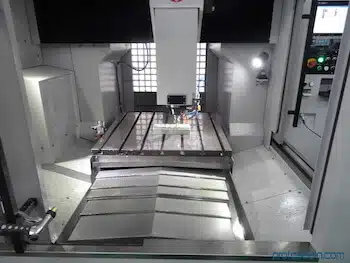CNC machining for prototyping
- Home
- >
- Prototyping
- >
- CNC Machining
What is CNC machining?
Numerical control machining or CNC machining is an automated turning and milling cutting process in which material is removed from a block of plastic or metal with a rotating tool. In CNC milling the cutting tool moves in three or five dimensions to achieve the desired shape on the part. In milling the cutting tool generally rotates around an axis that is perpendicular to the table containing the material to be cut. At first sight, a miller looks like a drill.
A cutting tool protrudes downward from the rotary head. The material stock is placed on a mobile bench below the blade. While the cutting tool rotates, a computer controls the vertical movement of the blade (Z axis) and the horizontal movement (X and Y axes) of the material stock. The cutter is guided to move through the material, removing portions from the workpiece to create shapes.
In addition, CNC machining allows for exceptional precision, making it the ideal choice for complex and detailed prototyping. Thanks to its ability to work with a wide variety of materials, from metals to plastics, CNC machining prototyping has become an essential tool in modern industry, facilitating innovation and the efficient production of customized parts.



How do CNC milling machines work to make a prototype?
The first step is to collect the 3D part design, the material information and the surface treatment desired by our customer, then the programming department prepares the CNC program according to the 3D design. Once the CNC manufacturing department has the programming, the raw material required by the customer is found and introduced into the machine and left to work according to the program entered. A technician supervises the whole process.
After CNC machining we obtain a preliminary part, on which our technicians work applying a cleaning and deburring process. Once cleaned and polished, the technicians recheck the prototype for any problems.
If the part is correct, it is sent to the painting department for the surface treatment requested by the customer. In case the part has to be painted, the required Pantone® color is chosen, once painted, it will be sent to the Quality Testing Department for CMM control.
Once everything is reviewed and conformed, photos of the prototypes are taken and sent to the customer for final approval, as a previous phase to the shipment of the prototypes. In addition, it is important to note that in ProtoSpain we are committed to maintain constant communication with the customer throughout the process, ensuring that each stage is performed according to their expectations. This not only guarantees the quality of the prototype, but also strengthens our relationship with our customers, who can trust that their project is in expert hands.
Attention to detail and dedication are fundamental to our approach to work, enabling us to deliver prototypes that not only meet technical requirements, but also exceed our customers’ expectations.
What kind of materials can we process and what surface treatments do we apply?
We can perform rapid prototyping of rigid materials including most metals: aluminum, stainless steel, copper, steel, brass, titanium, silver, bronze, etc., and hard plastics and other materials: Nylon, Acetal, polycarbonate, polystyrene, acrylic, fiberglass, carbon fiber, PTFE, ABS, PVC, PMMA, PEEK, etc. For materials with a certain degree of elasticity, injection molding is used in silicone molds.
The surface finishes we can apply are: painted, polished, pad printing, silk screen printing, anodized, transparent surfaces, translucent surfaces, brushed, oil painting, electroplating. In addition, at ProtoSpain we are constantly searching for new techniques and materials that allow us to offer innovative and customized solutions to our customers.
Our team of experts is ready to advise you on the choice of the most suitable material and surface treatment for your project, ensuring results that not only meet quality standards, but also stand out for their aesthetics and functionality. The combination of advanced technology and experience allows us to transform your ideas into tangible realities, ensuring that each prototype is a faithful representation of your vision.

Request a no-obligation quote